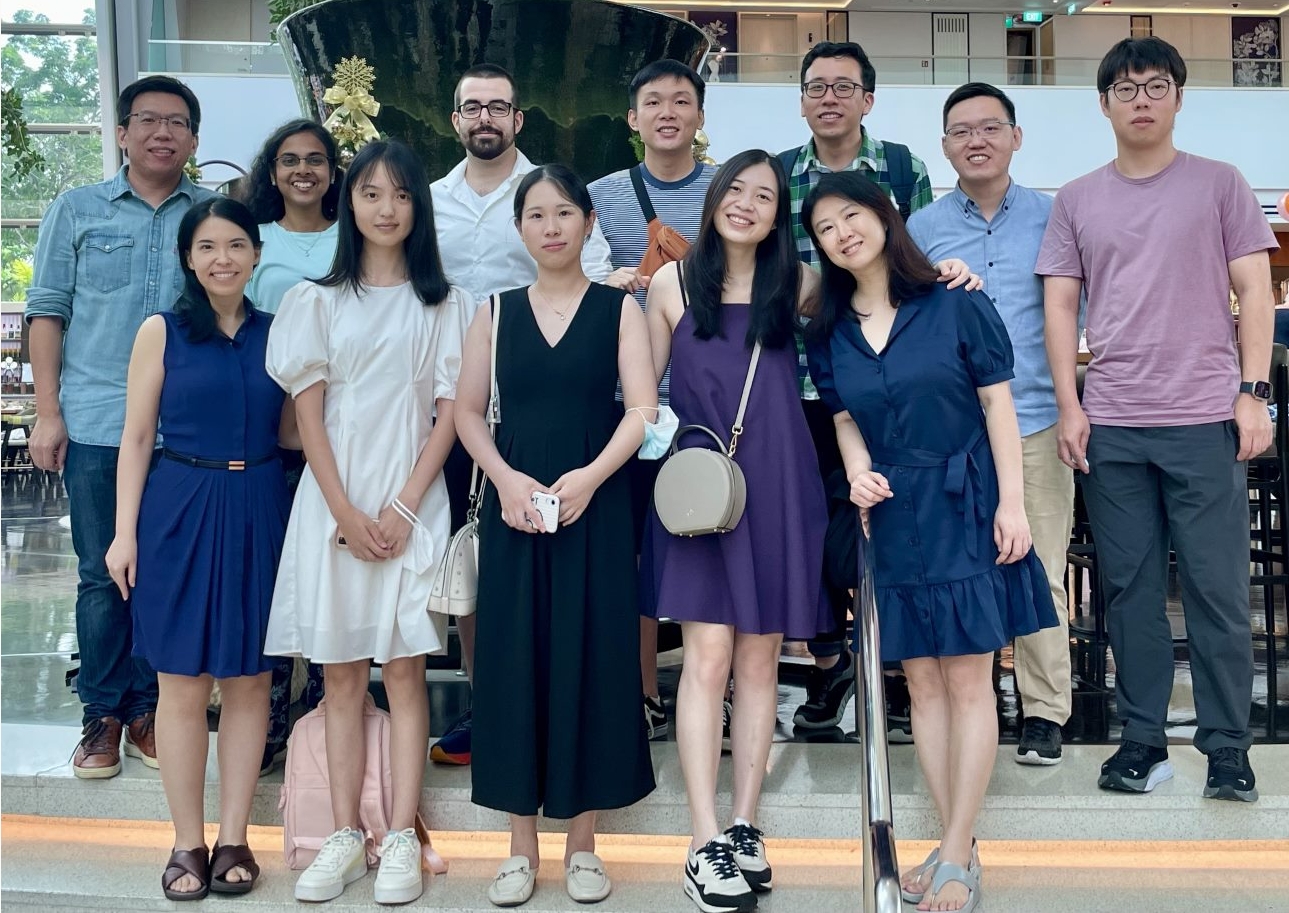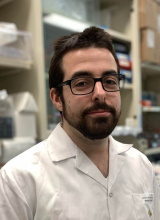Chromatin Interactions in Cancer

DESCRIPTION OF LAB RESEARCH WORK
Precision cancer medicine relies on understanding the individual workings of each cancer and person in order to develop tailored therapies. Chromatin interactions are regions of the genome that are far apart in the linear genome sequence but
come together in close 3-dimensional spatial proximity, and may constitute common mechanisms for gene regulation. Our lab’s main hypothesis is that epigenetic factors, transcription factors, and non-coding RNA are mutated in cancer, leading
to dysregulation of chromatin interactions and consequent dysregulated transcription and cancer progression. Artificial intelligence on patient epigenomics datasets in order to predict epigenomic events including chromatin interactions may be able
to eventually provide prognostic information as well as aid in the selection of epigenetic therapies for patients. We study this hypothesis within the system of all cancers, but with a focus on blood cancers as compared with normal blood formation.
LAB MEMBERS
 | LEAD PI
Melissa Jane Fullwood Associate Professor Lab Page Email: mfullwood@ntu.edu.sg Phone: (65) 6514 1006 Office: SBS-02s-58 |
 | Tang Seng Chuan
Research Fellow Email: sengchuan.tang@ntu.edu.sg |
 | Benjamin Lebeau Research Assistant Email: benjamin.lebeau@ntu.edu.sg |
 | Winnie Fam Research Assistant Email: winnie.fam@ntu.edu.sg |
 | Chen Kaijing
PhD Student Email: kaijing001@e.ntu.edu.sg |
 | Li Xinya
PhD Student Email: xinya001@e.ntu.edu.sg |
 | Ruchi Choudhary
PhD Student Email: ruchi003@ntu.edu.sg |
CURRENT PROJECTS
- Developing Artificial Intelligence for predicting chromatin interactions and epigenomic phenomena
- Understanding the roles of genomic silencers and chromatin interactions
- Characterizing chromatin interactions in Acute Myeloid Leukemia
- Characterizing the interplay between Epstein Barr Virus and human chromatin interactions in Nasopharyngeal cancer
- Investigating the roles of oncogenic transcription factor c-MYC in chromatin interactions and phase separation mechanisms
- Uncovering the relationships between chromatin interactions and RNA
- Understanding chromatin interactions in liver disease and liver cancer
PUBLICATIONS
- Yeo SJ, Ying C, Fullwood MJ^, Tergaonkar V.^, “Emerging regulatory mechanisms of noncoding RNAs in topologically associating domains”, Trends Genet, 2023.
- Dao FY, Hao LV, Fullwood MJ^, Hao L^, “Accurate identification of DNA replication origin by fusing epigenomics and chromatin interaction information”. Research (Wash D C). 2022.
- Tang SC*, Vijayakumar U*, Zhang Y*, Fullwood MJ^.,”Super-Enhancers, Phase-Separated Condensates, and 3D Genome Organization in Cancer.” Cancers (Basel). 2022.
- Zhang Y*, See YX*, Tergaonkar V, Fullwood MJ^., “Long-Distance Repression by Human Silencers: Chromatin Interactions and Phase Separation in Silencers”, Cells. 2022.
- See, Y.X.*, Chen K.J., and Fullwood, M.J.^ “MYC overexpression leads to increased chromatin interactions at superenhancers and c-MYC binding sites”, Genome Research, 2022.
- Animesh S.*, Choudhary R.*, Wong J. H. B., Koh C.T.J., Ng X. Y., Tay J.K.X., Chong W.Q., Jian H., Chen L., Goh B.C., Fullwood, M.J.^, “Profiling of 3D Genome Organization in Nasopharyngeal Cancer Needle Biopsy Patient Samples by a Modified Hi-C Approach”, Frontiers in Genetics, 2021.
- Cao F.*, Zhang Y*., Cai Y.*, Animesh S., Zhang Y., Akincilar S., Loh Y. P., Chng W.J., Tergaonkar V., Kwoh C.K., Fullwood M.J.^, “Chromatin interaction Neural Network (ChINN): A machine learning-based method for predicting chromatin interactions from DNA sequences”, Genome Biology, 2021.
- Zhang, Y.*, Cai, Y.*, Roca, X., Kwoh C.K.^, Fullwood M.J.^, “Chromatin loop anchors predict transcript and exon usage”, Briefings in Bioinformatics, 2021.
- Cai, Y.*, Zhang, Y.*, Loh, Y.P., Tng, J.Q., Lim, M.C., Cao, Z., Anandhkumar, R., Shang, L., Lakshmanan, M., Tergaonkar, V.., Tucker-Kellogg, G.^, Fullwood, M.J.^, “H3K27me3-rich regions can function as silencers to repress gene expression via chromatin interactions”, Nat Commun, 2021
- Jiang, Y.*, Jiang, Y.*, Li, C.*, Zhang, Y.*, Dakle, P.*, Kaur, H., Deng, J., Lin, Y., Han, L., Xie, J., Mayakonda, A., Hazawa, M., Xu, L., Li, Y., Aswad, L., Jeitany, M., Kanojia, D., Guan, X., Fullwood, M.J.^, Lin, D.^ and Koeffler, H.P.^ “TP63, SOX2 and KLF5 Establish Core Regulatory Circuitry and Construct Cancer Specific Epigenome in Esophageal Squamous Cell Carcinoma”, Gastroenterology, 2020 (Co-corresponding).
- Cao, F. and Fullwood, M.J., “Inflated performance measures in enhancer-promoter interaction prediction methods”, Nature Genetics, 2019.
- See, Y.X., Wang, B.Z., and Fullwood, M.J., “Chromatin Interactions and Regulatory Elements in Cancer: From Bench to Bedside,” Trends Genet., 2019.
- Cao F.*, Fang Y.*, Tan H.K., Goh Y., Choy J.Y.H., Koh B.T.H., Hao Tan J., Bertin N., Ramadass A., Hunter E., Green J., Salter M., Akoulitchev A., Wang W., Chng WJ., Tenen D.G., Fullwood M.J., “Super-Enhancers and Broad H3K4me3 Domains Form Complex Gene Regulatory Circuits Involving Chromatin Interactions”, Sci. Rep., 2017.

